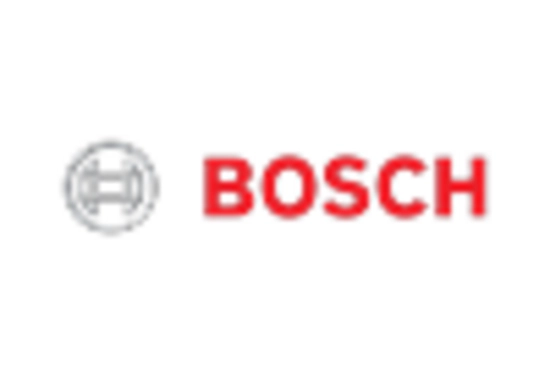Growing Demand for Keyless Entry Systems
The Automotive Door Handle Sensor Market is witnessing a surge in demand for keyless entry systems. As consumers seek convenience and ease of access, manufacturers are responding by developing door handle sensors that enable seamless entry without traditional keys. Market analysis indicates that the keyless entry segment is expected to account for over 40% of the total market share by 2026. This shift is largely driven by consumer preferences for modern, tech-savvy vehicles that offer enhanced user experiences. Consequently, automakers are investing in research and development to create more reliable and efficient sensor systems, further propelling market growth.
Rise of Electric and Autonomous Vehicles
The Automotive Door Handle Sensor Market is significantly influenced by the rise of electric and autonomous vehicles. As these vehicles become more prevalent, the demand for innovative features, including advanced door handle sensors, is increasing. Electric vehicles often incorporate smart technologies that enhance user interaction, making door handle sensors a critical component. Market projections suggest that the electric vehicle segment will grow at a compound annual growth rate of around 15% through 2030. This growth indicates a shift in consumer preferences towards sustainable and technologically advanced vehicles, which in turn drives the need for sophisticated sensor solutions in the automotive sector.
Integration with Advanced Security Features
The Automotive Door Handle Sensor Market is experiencing a notable shift towards enhanced security features. As vehicle theft rates continue to rise, manufacturers are increasingly integrating advanced sensor technologies into door handles. These sensors not only facilitate keyless entry but also provide additional layers of security, such as biometric recognition and proximity alerts. The demand for such features is reflected in market data, indicating a projected growth rate of approximately 8% annually in the sector. This trend suggests that consumers are prioritizing safety and convenience, driving manufacturers to innovate and incorporate sophisticated sensor technologies into their designs.
Technological Advancements in Sensor Technology
The Automotive Door Handle Sensor Market is benefiting from rapid technological advancements in sensor technology. Innovations such as improved sensitivity, miniaturization, and integration with IoT devices are enhancing the functionality of door handle sensors. These advancements allow for more accurate detection and response times, which are crucial for user satisfaction. Market data suggests that the adoption of smart sensors is expected to increase by 25% over the next five years, as manufacturers strive to meet consumer expectations for high-tech features. This trend indicates a strong correlation between technological progress and market growth, as automakers seek to differentiate their products in a competitive landscape.
Consumer Preference for Enhanced User Experience
The Automotive Door Handle Sensor Market is increasingly shaped by consumer preferences for enhanced user experiences. Modern consumers are looking for vehicles that offer convenience, ease of use, and innovative features. Door handle sensors that provide seamless access without the need for physical keys are becoming a standard expectation. Market Research Future indicates that nearly 70% of consumers consider keyless entry a desirable feature when purchasing a vehicle. This growing preference is prompting manufacturers to prioritize the development of user-friendly sensor technologies, thereby driving market expansion. As a result, the Automotive Door Handle Sensor Market is likely to see continued growth as automakers adapt to changing consumer demands.


















Leave a Comment